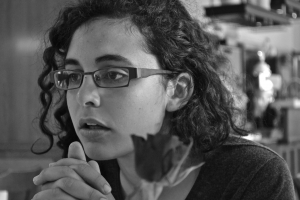Let’s just say I didn’t like Modican chocolate that first time I tried it. As my teeth bit into the bar, creamy was the last word I thought about. Instead, it was crunchy. That may have been the right adjective. In Modican chocolate the sugar is not melted, so you may as well forget about the velvety smooth texture that you are used to in ordinary chocolate. It’s all about granules here. It seems some people prefer it because they think it “is unparalleled in flavour, such that tasting it is like reaching the archetype, the absolute, and that chocolate produced elsewhere, even the most celebrated, is an adulteration, a corruption of the original”, as the great 20th century Sicilian writer Leonardo Sciascia poetically declared. But truth be told, I didn’t fancy it much.
So when I had to go to Sicily to visit the producer of that same chocolate, I was not expecting much. It turns out I was missing a big part of the picture. Why is that? Because Modican chocolate was not created for being eaten, but instead for being drunk. It was then that I understood how much can be lost in translation when you blindly take a food and remove it from its context.
As you may know, chocolate was taken by Mayans and Aztecs as a drink seasoned with spices like pepper or vanilla. It is striking to see how sometimes an etymology can narrate so well the story of the word it belongs to. Chocolate was a term created by the Spanish from “xocol” (meaning hot or bitter) and “atl” (water). “Theobroma cacao”, the botanical name of its tree, comes from the Greek word meaning “food of the gods” and the Aztec word for “money”, respectively. Imagine that. For the Aztec civilization cacao beans were so valued that they were used as currency.
When it was first brought to Europe, chocolate was “Europeanized”. But even if sugar and other spices like cinnamon were added and chili was eliminated, it was still taken exclusively as a drink until the end of the 19th century. Ironically, the chocolate we know and appreciate today was a consequence of the pursuit of a “lighter” hot chocolate. In 1828 a Dutch man called Conrad van Houten invented defatted cocoa powder, and in so doing, creating a surplus of cocoa butter. Van Houten’s need for excess cocoa butter came from a textural problem with chocolate bars, which were crumbly and chalky instead of smooth and creamy as we know them today.
The cacao beans naturally had insufficient quantities of fat to cover the excess of dry particles that adding sugar to a chocolate bar mixture created. (We would have to wait for a long time before the discovery of lecithin, an emulsifier that can substitute cocoa butter 1/10 -one part of lecithin can replace ten parts of cocoa butter- and happens to be much cheaper). Not so long after that, milk powder was invented by Nestle and added to the mix. Then our friend Lindt from Switzerland created the “conche”, a machine that agitates, rubs and smashes the chocolate mixture (cocoa mass and butter, sugar, milk powder,…) for several hours until it all becomes a smooth, creamy paste. It was 1879. The modern chocolate bar had been created.
But Modican chocolate producers didn’t hear about any of this and continued as they always had. The only ingredients you will find in a bar of chocolate from Modica are ground cocoa beans, sugar, and another single flavor. After the cocoa beans have been ground, they are gently warmed and the sugar is added. As the mix never goes above 40ºC (a process called “cold-working”) the sugar crystals never get the chance to melt, giving the chocolate its granular texture. Then the flavor can be added. Almonds, cinnamon, pistachio, chili, orange or hazelnuts are only a few of the traditional choices.
So there I was, in a lovely little shop called Donna Elvira tasting for the first time the real Modican chocolate. I gulped down my cup as my travel companion reminded me that it was 28ºC outside. Oh, but it was so worth it. One of the best chocolates I had ever tasted. Now every time I melt a bar of Modican chocolate I stop for a second, look at it, and think: “how sad if I had never seen its true value”. So if you ever happen to come across a chocolate bar with the name of ‘Donna Elvira’ or ‘Sabadi’, buy it. Melt it in water or milk (the first is the traditional way, but I can tell you that the second one is utterly delicious) and drink up.
As the great Spanish philosopher, Jose Ortega y Gasset said, “I am I plus my circumstances”. Food is the son of its context. Be careful about judging it if you don’t know where it comes from. I wondered, in the end, what was the point of spending more energy to melt the sugar into the bar if the chocolate was going to be eaten melted anyway?



